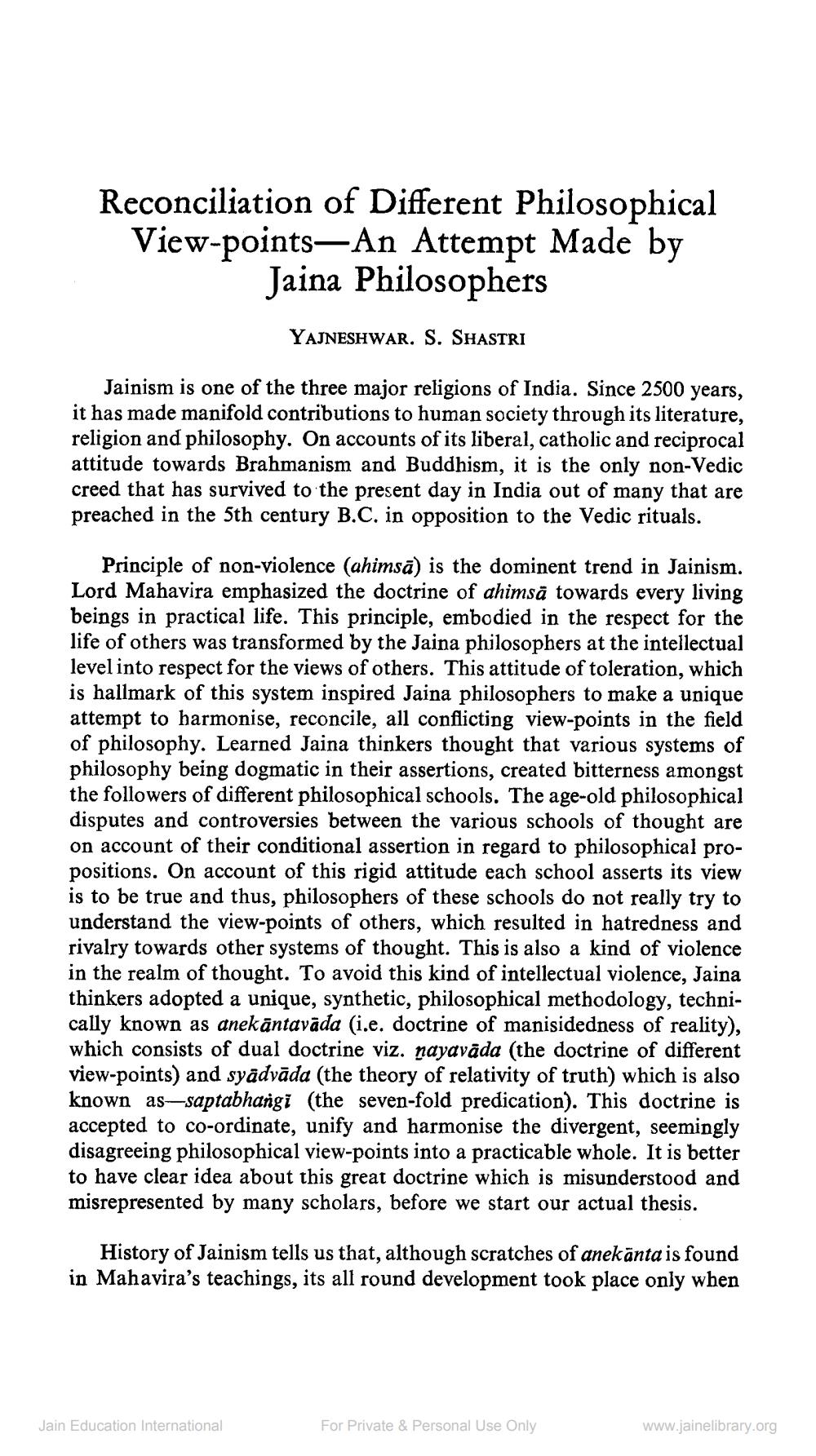Book Title: Jain Journal 1987 01 Author(s): Jain Bhawan Publication Publisher: Jain Bhawan Publication View full book textPage 4
________________ Reconciliation of Different Philosophical View-points-An Attempt Made by Jaina Philosophers YAJNESHWAR. S. SHASTRI Jainism is one of the three major religions of India. Since 2500 years, it has made manifold contributions to human society through its literature, religion and philosophy. On accounts of its liberal, catholic and reciprocal attitude towards Brahmanism and Buddhism, it is the only non-Vedic creed that has survived to the present day in India out of many that are preached in the 5th century B.C. in opposition to the Vedic rituals. Principle of non-violence (ahimsā) is the dominent trend in Jainism. Lord Mahavira emphasized the doctrine of ahimsa towards every living beings in practical life. This principle, embodied in the respect for the life of others was transformed by the Jaina philosophers at the intellectual level into respect for the views of others. This attitude of toleration, which is hallmark of this system inspired Jaina philosophers to make a unique attempt to harmonise, reconcile, all conflicting view-points in the field of philosophy. Learned Jaina thinkers thought that various systems of philosophy being dogmatic in their assertions, created bitterness amongst the followers of different philosophical schools. The age-old philosophical disputes and controversies between the various schools of thought are on account of their conditional assertion in regard to philosophical propositions. On account of this rigid attitude each school asserts its view is to be true and thus, philosophers of these schools do not really try to understand the view-points of others, which resulted in hatredness and rivalry towards other systems of thought. This is also a kind of violence in the realm of thought. To avoid this kind of intellectual violence, Jaina thinkers adopted a unique, synthetic, philosophical methodology, technically known as anekāntavāda (i.e. doctrine of manisidedness of reality), which consists of dual doctrine viz. nayavada (the doctrine of different view-points) and syādvāda (the theory of relativity of truth) which is also known as saptabhangi (the seven-fold predication). This doctrine is accepted to co-ordinate, unify and harmonise the divergent, seemingly disagreeing philosophical view-points into a practicable whole. It is better to have clear idea about this great doctrine which is misunderstood and misrepresented by many scholars, before we start our actual thesis. History of Jainism tells us that, although scratches of anekanta is found in Mahavira's teachings, its all round development took place only when Jain Education International For Private & Personal Use Only www.jainelibrary.orgPage Navigation
1 2 3 4 5 6 7 8 9 10 11 12 13 14 15 16 17 18 19 20 21 22 23 24 25 26 27 28 29 30 31 32 33 34 35 36 37 38 39 40
